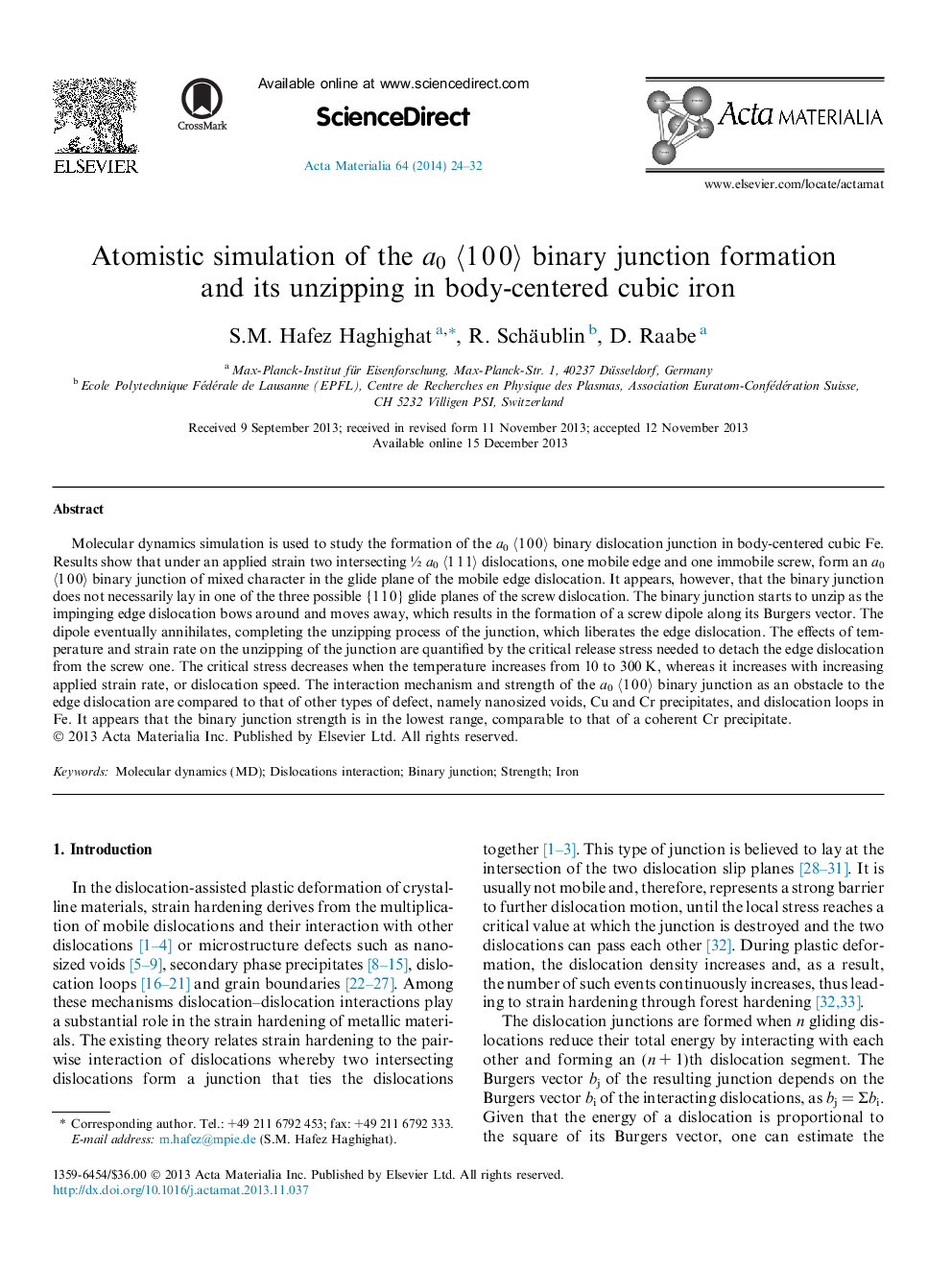| کد مقاله | کد نشریه | سال انتشار | مقاله انگلیسی | نسخه تمام متن |
|---|---|---|---|---|
| 7882662 | 1509612 | 2014 | 9 صفحه PDF | دانلود رایگان |
عنوان انگلیسی مقاله ISI
Atomistic simulation of the a0 ã1Â 0Â 0ã binary junction formation and its unzipping in body-centered cubic iron
دانلود مقاله + سفارش ترجمه
دانلود مقاله ISI انگلیسی
رایگان برای ایرانیان
موضوعات مرتبط
مهندسی و علوم پایه
مهندسی مواد
سرامیک و کامپوزیت
پیش نمایش صفحه اول مقاله

چکیده انگلیسی
Molecular dynamics simulation is used to study the formation of the a0 ã1 0 0ã binary dislocation junction in body-centered cubic Fe. Results show that under an applied strain two intersecting ½ a0 ã1 1 1ã dislocations, one mobile edge and one immobile screw, form an a0 ã1 0 0ã binary junction of mixed character in the glide plane of the mobile edge dislocation. It appears, however, that the binary junction does not necessarily lay in one of the three possible {1 1 0} glide planes of the screw dislocation. The binary junction starts to unzip as the impinging edge dislocation bows around and moves away, which results in the formation of a screw dipole along its Burgers vector. The dipole eventually annihilates, completing the unzipping process of the junction, which liberates the edge dislocation. The effects of temperature and strain rate on the unzipping of the junction are quantified by the critical release stress needed to detach the edge dislocation from the screw one. The critical stress decreases when the temperature increases from 10 to 300 K, whereas it increases with increasing applied strain rate, or dislocation speed. The interaction mechanism and strength of the a0 ã1 0 0ã binary junction as an obstacle to the edge dislocation are compared to that of other types of defect, namely nanosized voids, Cu and Cr precipitates, and dislocation loops in Fe. It appears that the binary junction strength is in the lowest range, comparable to that of a coherent Cr precipitate.
ناشر
Database: Elsevier - ScienceDirect (ساینس دایرکت)
Journal: Acta Materialia - Volume 64, February 2014, Pages 24-32
Journal: Acta Materialia - Volume 64, February 2014, Pages 24-32
نویسندگان
S.M. Hafez Haghighat, R. Schäublin, D. Raabe,